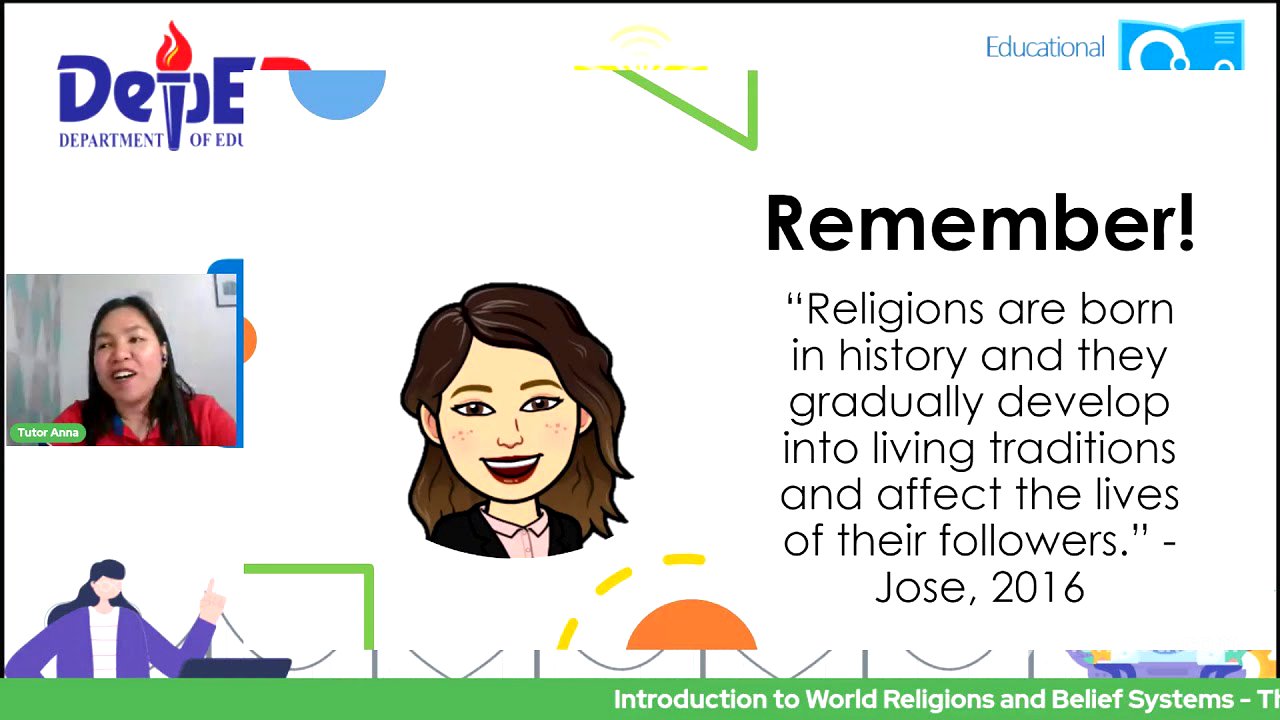TLDR;
This video provides an introduction to world religions and belief systems, focusing on their origins and historical context. It categorizes religions into Abrahamic, Dharmic, and those influenced by Chinese civilizations. The discussion covers the interconnectedness of geography, culture, and religion, highlighting exclusive vs. non-exclusive and universalizing vs. ethnic religious types.
- Categorizes world religions into Abrahamic, Dharmic, and Taoist-influenced groups.
- Explores the historical and geographical origins of major religions.
- Differentiates between exclusive/non-exclusive and universalizing/ethnic religious classifications.
Introduction to World Religions [4:22]
The session introduces the topic of world religions and belief systems, specifically focusing on the origins of these religions. It aims to analyze the interconnectedness of geography, culture, and religion. The lesson is designed for week two of the third quarter.
Review Questions [5:56]
A matching type review is conducted to test the audience's understanding of previous lessons. Questions cover concepts such as monotheism, agnosticism, worldview, and atheism. The correct answers are provided and explained to reinforce understanding.
Origins of World Religions [9:45]
World religions are divided into three major parts: Abrahamic religions (Judaism, Christianity, and Islam), Dharmic religions (Buddhism), and those influenced by Chinese civilizations. Dharmic religions emphasize duties and responsibilities.
Historical Conditions: Abrahamic Religions [12:01]
The historical conditions of Abrahamic religions are discussed, tracing their origins back to the patriarch Abraham. Abraham is considered the father of these nations, who made a covenant with God. Judaism, Christianity, and Islam are further dissected into denominations such as Sunni and Shiite Muslims. Christianity has three main sections: Roman Catholicism, Protestantism, and Eastern Orthodoxy.
Historical Conditions: Dharmic Religions [16:36]
The geographical context of Dharmic religions, specifically Hinduism and Buddhism, is explored, noting their origins in regions that were home to ancient civilizations like the Harappan and Mohenjo-daro. The influence of the Aryans or Indo-Europeans is also mentioned.
Historical Conditions: Taoist Religions [17:25]
Taoist religions are highly influenced by Chinese civilizations, which were established around four thousand years ago. These religions believe in traditions and practices from that era.
Geographical Influences [18:12]
The lesson reviews geographical influences on religion, such as the origin of Judaism, Christianity, and Islam in West Asia. The Ganges River is identified as the holiest river for Hindus and Buddhists. The influence of river valleys on the establishment of belief systems is highlighted.
Cultural Traditions and Religious Classifications [27:46]
Cultural tradition is defined as the setting or environment in which one lives, including social and cultural aspects. Religions are classified as exclusive or non-exclusive, with examples such as monotheistic religions being exclusive and Hinduism and Buddhism being non-exclusive due to their association with multiple gods (polytheism). Universalizing religions, like Christianity and Islam, aim to operate on a global scale, while ethnic religions are tied to specific groups of people and localities.
Summary and Closing Remarks [32:19]
The session concludes with an activity where viewers are asked to summarize the concepts learned using specific words. It emphasizes that religions are born in history and evolve into living traditions that affect the lives of their followers. Religion helps people make sense of the world and provides hope. The next session will discuss the positive and negative effects of religions.









